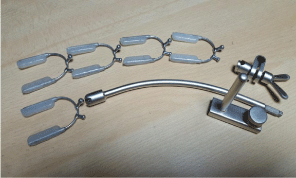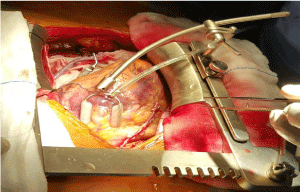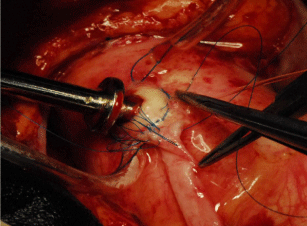Editorial
Cardiac surgery has been the only surgical specialty that has the maximum wastage that remains after every open heart surgery is completed. In fact its more than two huge buckets of plastic that is usually send away to be incinerated or discarded or even recycled if possible. Ever since I took up this specialty twenty five years ago, I had been observing this colossal waste that keep piling after every surgery in every operation theatre, where this is conducted.
With the advent of Off Pump Coronary Artery Bypass (OPCAB) surgery, it was really heartening to see that we could try and avoid the pump for performing surgery on the coronary arteries that remain on the surface of the heart. Hence we avoid the use of the oxygenator and the reservoir that needed to be discarded after every use. This in fact reduced the amount of carbon foot print we leave every day by just avoiding the heart lung machine [1].
Once the beating heart surgery started getting popular, we started propagating the technique. We then noticed that the stabilizers are the only ones that needs to be discarded. But that too could be sterilized and reused, using ethylene oxide. In spite of the sterilization technique, we still had to discard these plastic stabilizers after using it for about 20 times, as it became sloppy. Hence we noticed that in our unit we had to procure two stabilizers every month. And so 24 stabilizers a year had to be discarded. This was again costing a thousand USD a piece. Hence we ventured on to develop a reusable, metallic stabilizer where in the only piece that needed to be replaced for every surgery were the pods (Figure 1).These pods would cost only about 10 USD a piece.

Figure 1: SIMS- Simple Indian Made Stabilizer.
Once this stabilizer was developed, we have now started using them as normal metallic surgical instruments and have been routinely sterilizing them. Over the last two years we have used the same instrument sets for over six hundred coronary surgeries. This set is in fact made of a sternal spreader with a railing on both sides over which a vertical two inch metallic rod could be fixed with a screw and the position could be moved according to the coronary artery which needed to be bypassed. Over this metal rod, we have the stabilizer rod that is fixed at its base with another clamp, which in turn could be moved over the metal rod to which ever position we need.
The stabilizer rod is in fact a curved metallic tube which houses another curved metal rod inside. The curved out tube has a distal metal end that holds a housing in which the pod head could play around. This housing has three slots which allows the pod to move in them when positioned. The proximal end of the outer tube has a screw which when screwed would tighten the inner rod. The inner rod at its distal end is convex and this moves on the concave end of the interlocking rod in front of it. The interlocking rod is the crux of the stabilizer. This is a half a centimetre piece of metal which is concave on both ends. The proximal concave end allows the metal rod to push it forward or distally, and the distal concave bit allows the head of head of the pod to rest on it. Hence when the pod is placed parallel to the coronary artery, we first tighten the rod in the intended position and the pod is tightened by tightening the screw at the proximal end this screw in turn pushed the inner rod forward and the rod pushes the interlocking rod which in turn tighten the head of the pod in the desired position. This once positioned is so stable that it does not move at all. The pod has suckers like in the conventional stabilizers, which could be attached to the suction apparatus and used as suction stabilizer as well. Over time, once we get used to the stabilizer we can avoid suction if not absolutely needed (Figure 2).

Figure 2: SIMS used in front of the heart.
We had developed a proximal anastomotic obturator called VAO (Vettath’s Anastomotic Obturator) , which was patented in 2004, when there was a surge of disposable anastomotic devises that came up in the market. We wanted to develop a device that could be used to help us in performing the proximal coronary anastomosis without a side clamp. This VAO was again a simple piece of metal rod with a washer on the distal end that would prevent the blood spill on you. This technique was published in HSF (Heart Surgery Forum) [2]. Again this was a reusable instrument unlike the disposable ones in market and would cost nothing as it was reusable. The cost of the device was about 20 USD (Figure 3).

Figure 3: VAO- Vettath’s Anastomotic Obturator.
Another device that we developed was the Vettath’s blower and blower mister that replaced the conventional blower mister in the market [3]. Here we utilised the coronary ostial cannula that is used to deliver cardioplegia directly to the coronary ostia in patients with aortic regurgitation, after the aorta is opened. We removed the tip and connected an intravenous cannula tip and used it as the blower. And ever since, for over 4000 OPCABs that’s what we have been using.
In this way, we have been able to reduce the carbon foot print we leave behind as cardiac surgeons in whatever small way we could. And by developing reusable surgical equipment and surgical devices we hope to keep our planet as green as possible. Hence we urge each and every one to try our maximum to reduce, recycle and reuse whatever possible in our field to make this earth liveable for the future generation.
References
- Vettath MP, Ismail Et, Kannan Av. Re-engineering in OPCAB-A Vettath’s perspective. World Journal of Cardio vascular Disease. 2013; 3: 33-44.
- Vettath MP. Vettath’s anastomotic obturator: A simple proximal anastomotic device. The Heart Surgery Forum #2003-73305. 2003; 6.
- Vettath MP, Vellachamy KA, Talya R, Thazhakuni I, Moothencheri J, Thomas J. Vettath’s blower and blower/mister - a simple device for OPCAB surgery. Asian Cardiovasc Thorac Ann. 2008; 16: 76-77.
